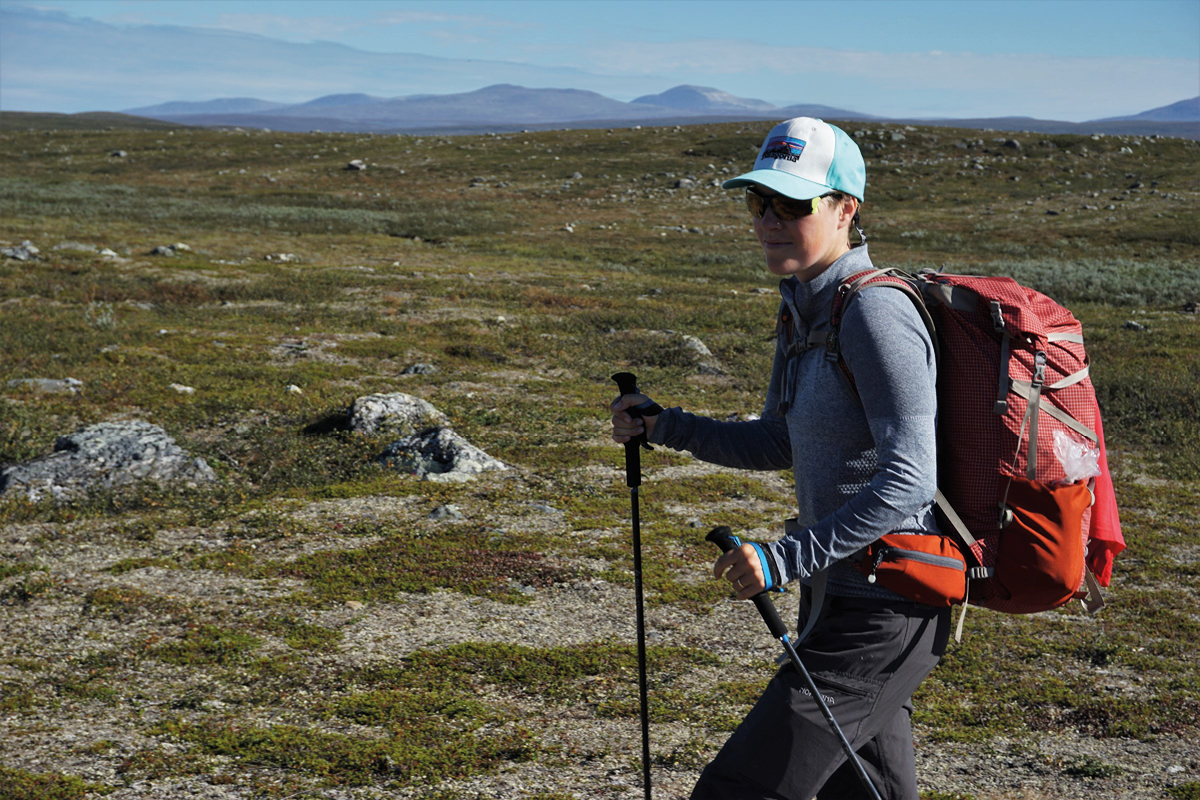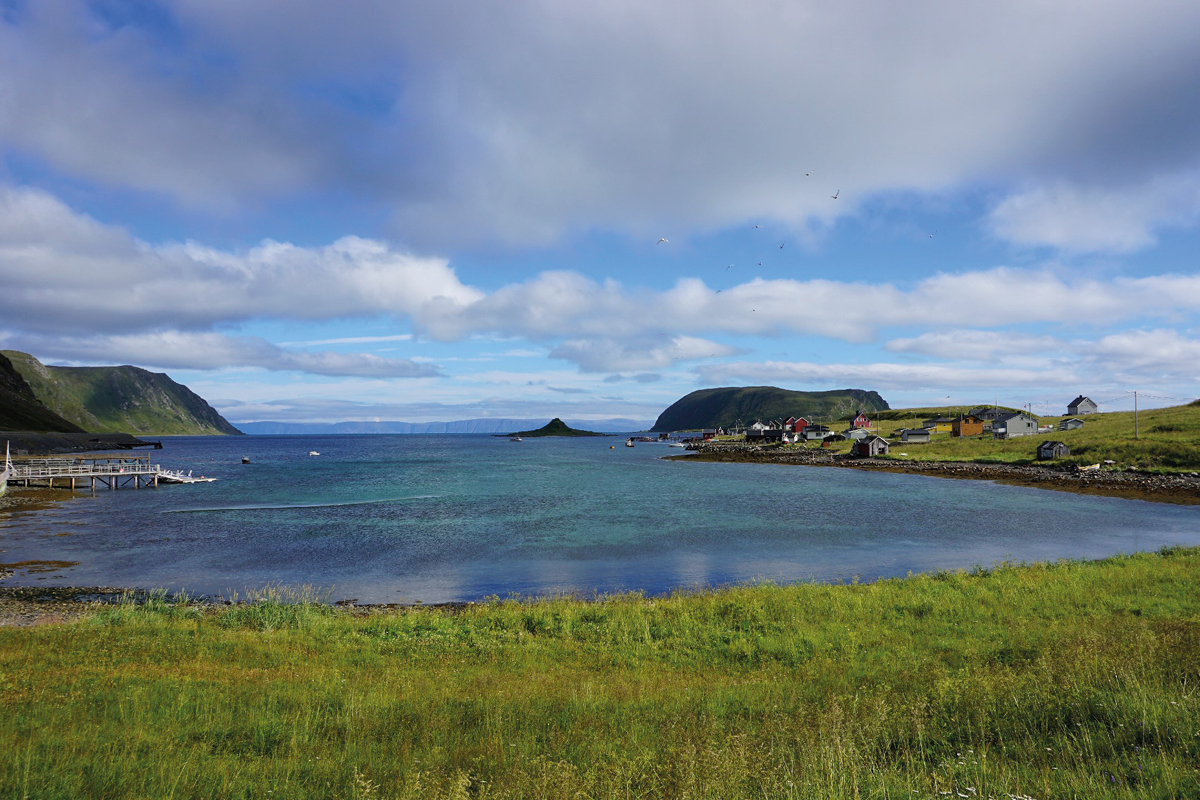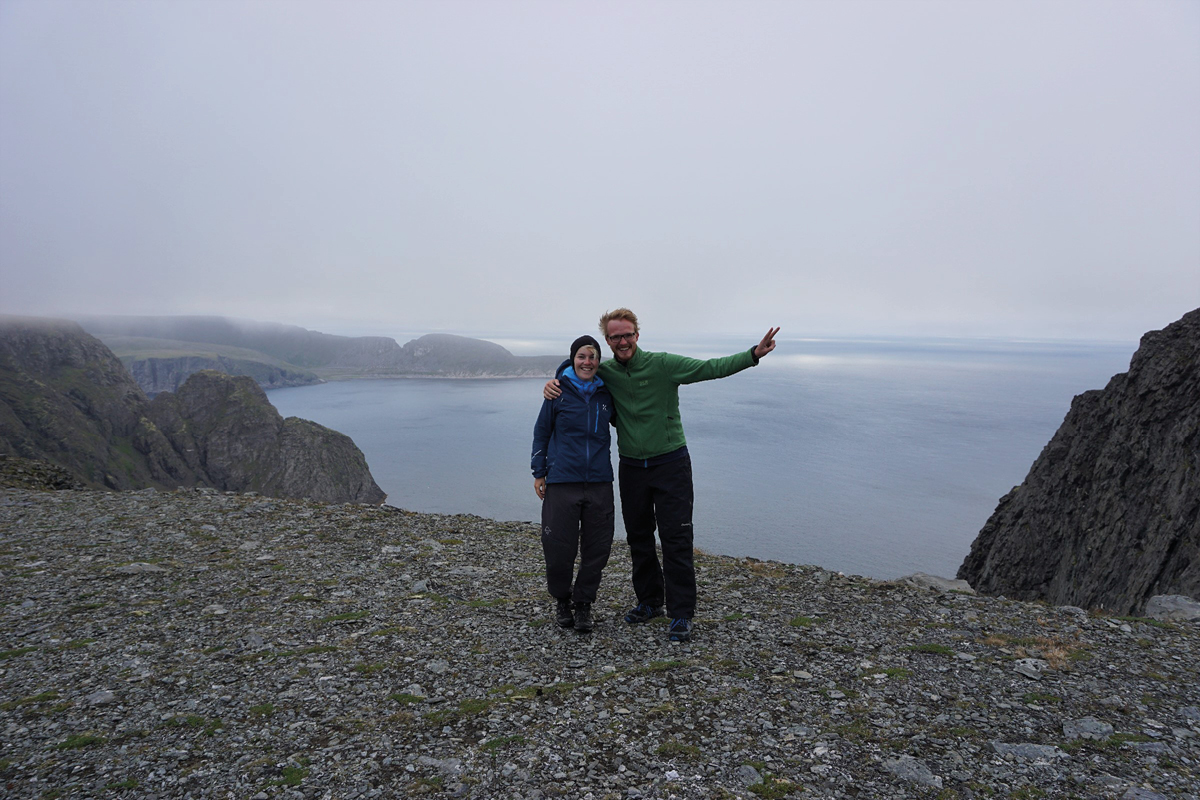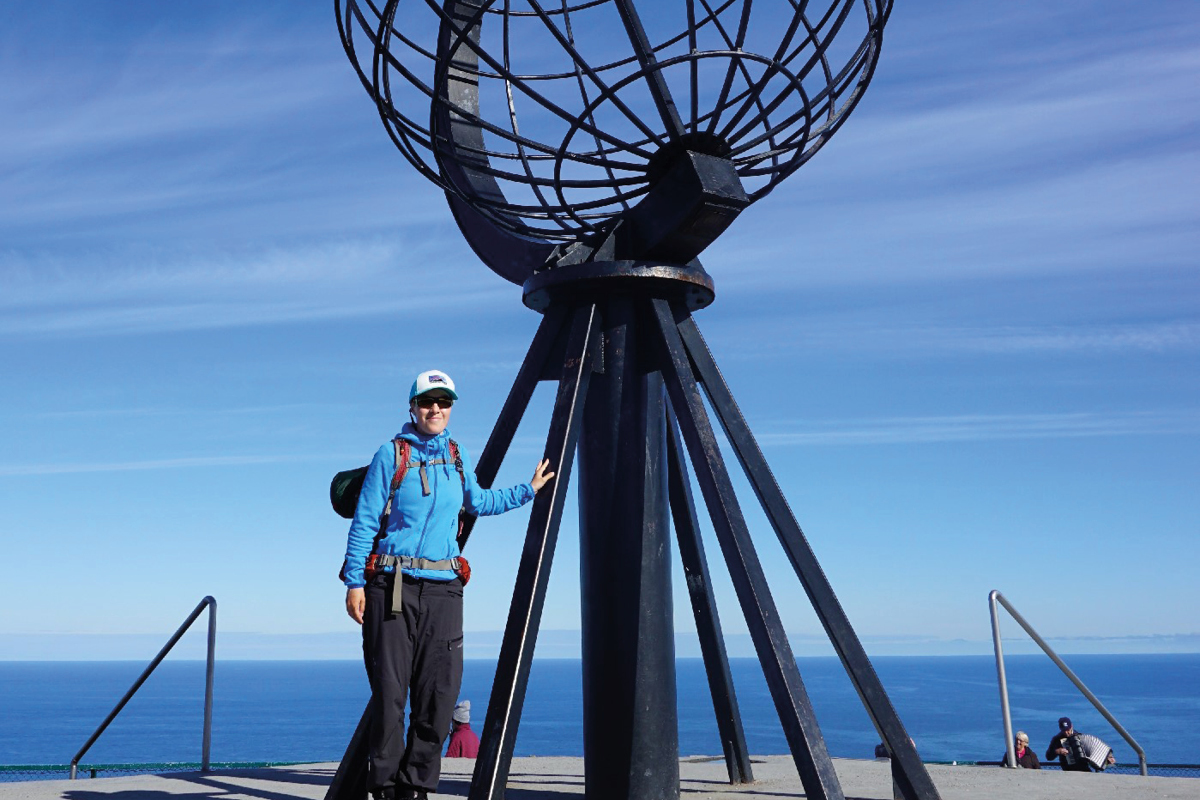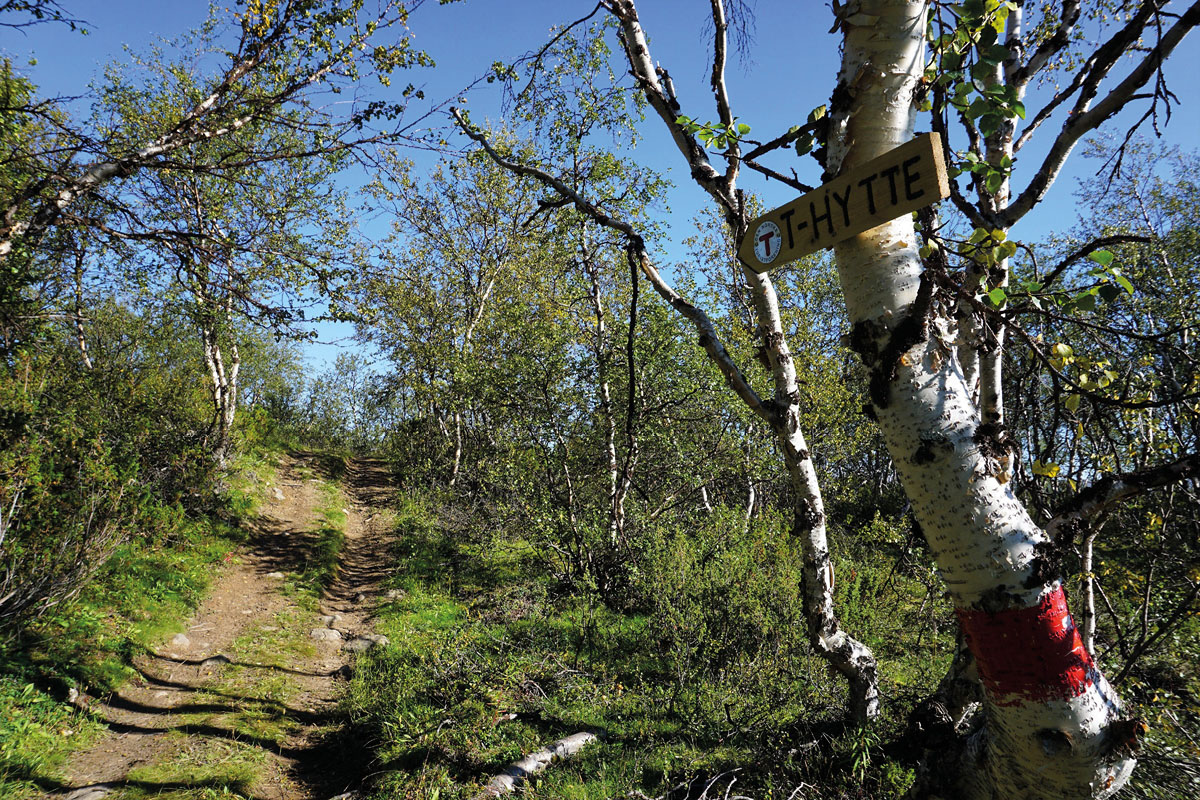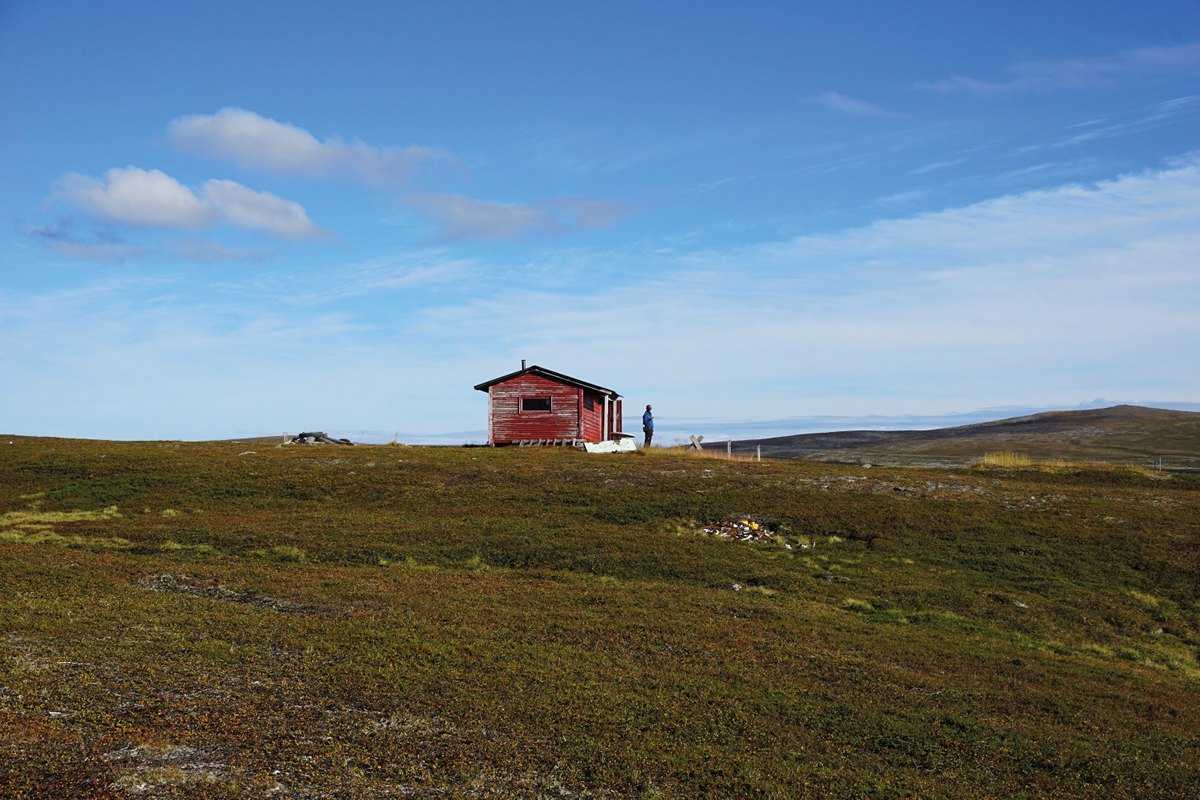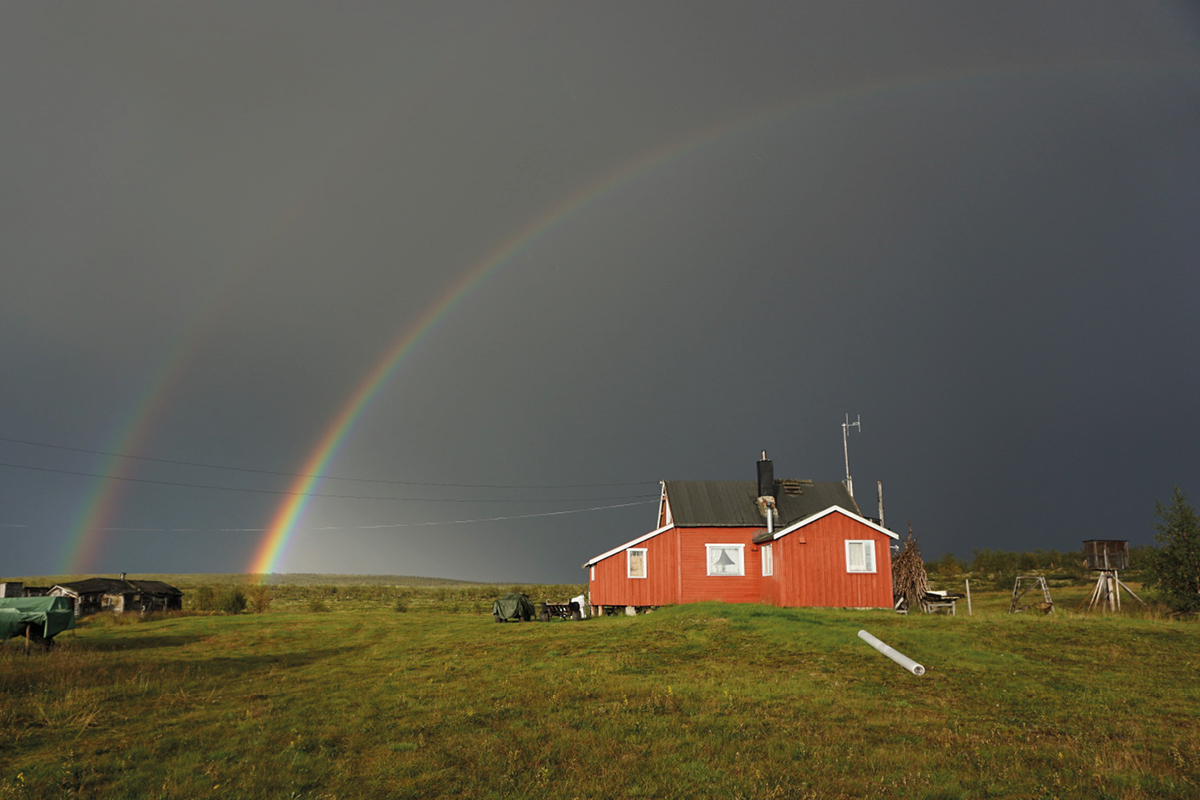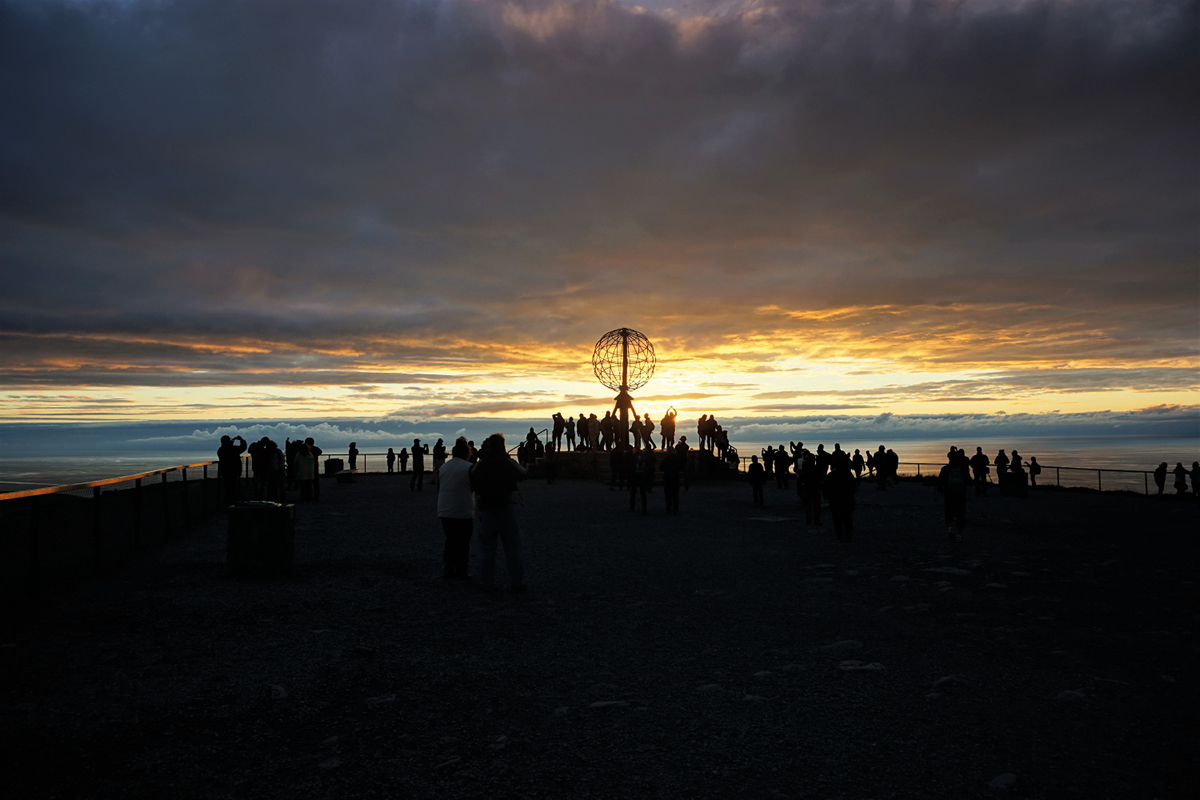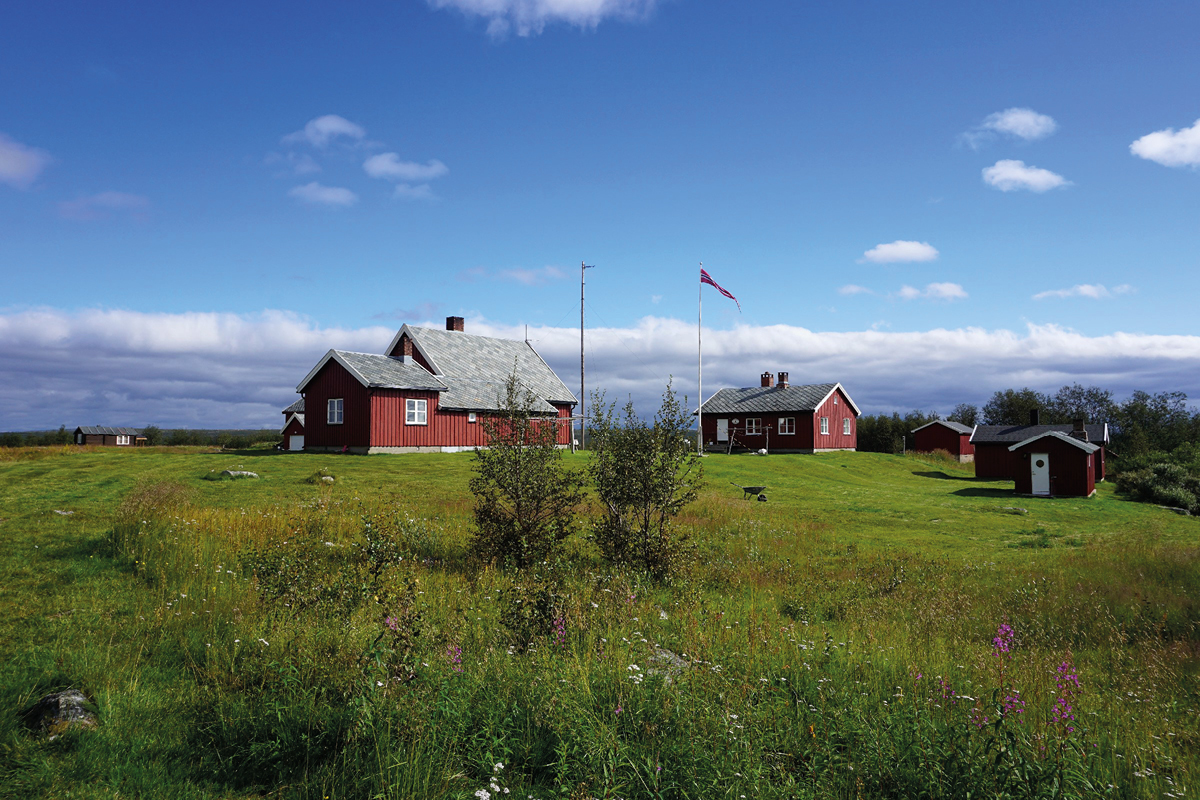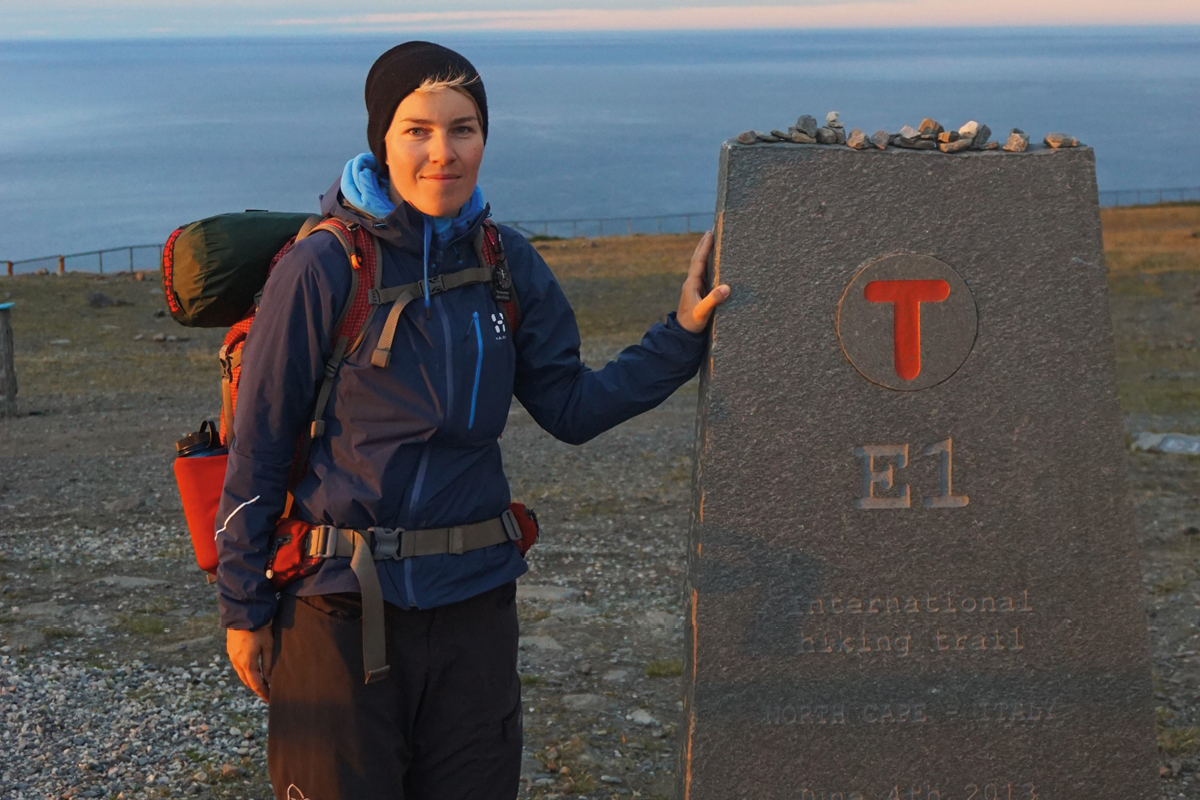
“Experiences that a long-distance hiker can only wish for”
– A conversation with outdoor writer Sara Danielsson.
She loves “outdoorsy stuff”. Whether hiking, skiing, surfing, camping or fishing, just being out in nature makes Sara feel at home. Already as a teenager, nature was drawing the trained literary scholar to distant places. After several years in Portugal, she has now set up base camp in Sweden with her husband and cat. Even from there, she is still on the lookout for her next outdoor adventure.
She has accumulated beautiful stories and some seriously good photos from her travels. Luckily for us, she just recently wrote a book about her time spent hiking on the Norwegian leg of the E1. We took the opportunity to talk to Sara about the European long-distance hiking trail, the ‘great outdoors’ and her photos.
You hiked the section of the E1 in Norway from Kautokeino to the North Cape. How long did your journey take?
The route itself can easily be hiked in about two weeks. Last year I was there for a whole month since doing research for the book naturally takes up more time.
Were you reachable by telephone or online? Did you blog or post about your experiences in the evening?
In Finnmark there is actually network coverage, even in remote areas far away from civilisation. This is probably because the Finnmarksvidda is not very mountainous. If you are not getting any reception, you can simply go to the next hill!
I did not write any blog posts during the research, I wanted to first process my experiences and keep most of the material for the book. I couldn’t resist uploading a few photos on Facebook, though – especially when I was lucky while fishing!
The Finnmark is a very sparsely populated area. What was the longest period you went without meeting anyone?
Actually, I met at least one other person almost every day. For example, a Sami who has just been building a reindeer fence, or locals who crossed the Finnmarksvidda with a quad bike during the weekend. There were also a few hikers along the way, of course.
Do you sometimes feel lonely in the Norwegian countryside or do you enjoy the peace and quiet?
I enjoy the quiet, but I am always happy when there is a cottage to spend the night and I can sit in front of the fireplace and flip through a few Fjell & Vidde magazines from the Norwegian Hiking Association (DNT).
Are you more likely to be alone or with like-minded friends in your ventures? How was it this time?
In Finnmark I was with a friend from Sweden. I am rarely on my own because on this kind of trip I like to just talk about all the situations and experiences that happen. If I am alone, I find it hard to really enjoy the moment. Conversely, difficult situations often seem easier when I have company. If I am alone it is easy to get discouraged, for example, if it is pouring down with rain for a whole week.
I often go on trips with my friends from Germany, Sweden or Portugal – and with my husband of course!
What was the highlight for you on the E1?
The Bojobæski Hut was a real highlight for me. A wonderful hut in a fantastic location and still almost unknown and very rarely visited. It was particularly nice to see how much effort is put in by the volunteers from the DNT in Alta. When we got there, candies were on the table, Nutella in the closet, and the fireplace was already prepared.
Another highlight was the private Stohpojohka Hut further north. This small shelter belongs to a Sami family but is open to all travellers. There are no trees growing that far North, and it is often very windy. To find a shelter from the weather conditions is really wonderful. It is very worthwhile to look through the guestbook, it has so many exciting stories of hikers from countless countries.
What part of the route do you recommend for a day hike or a weekend?
On the Magerøya, near the North Cape, a popular route goes to Knivskjellodden, which is actually a bit more northerly than the North Cape. This is a great day trip.
A visit to the open cottage Vannfjordhytta, or the Magerøya, is also highly recommended. There are fewer tourists there and the landscape is unique.
For most other walks you should plan for at least one overnight stay. Follow the E1 from the southern entrance of the North Cape Tunnel for a nice camping trip. You can camp at Kobbefjorden.
Have you already been on other parts of the E1? If so, where?
From Kautokeino, the E1 runs parallel to the Nordkalottleden to a large extent. I have been there quite often. At the moment I work practically on the E1 and Nordkalottleden, in Ritsem.
South of Sulitjelma, I have only been to the southern part – the Femundsmarka National Park and Grövelsjön. So I still have a lot to do!
Are you tempted to hike the entire E1 in one go?
To be honest, outside Scandinavia, I am only interested in doing the route in sections. I come from Hamburg myself, so maybe that is why I do not have much motivation to go hiking in the lowlands.
Mountains, lakes, forests and the possibility to camp and fish almost everywhere – these are the best conditions for a longer trip of several weeks or even months. I would also be excited about doing shorter trips along the E1 in Denmark, Germany, Switzerland and, of course, Italy.
Do you find projects like the E1 important for Europe?
Absolutely!
It is fantastic that such international hiking trails are created. I think the E1 really has the potential to evolve into the European Pacific Crest Trail as there are all the things that a hiker can wish for along the way: challenging terrain, solitude, big cities, different cultures and the whole range of European landscapes. From the Alps to the glaciers of Norway and from the Mediterranean to the Barents Sea.
On experience and motivation
Do you take any digital entertainment with you? Like an Mp3 player or something similar? Is there something that you must have on any trip?
I almost never bring anything to read. Occasionally I hear music on my phone. But I always take a Yahtzee game with me. You can also pass the time with it on long, rainy evenings. When I’m researching for a book, I usually take notes or paint a little in my block in the evening.
How does it feel to start a new adventure? Are you instantly in the moment or do you have to ease into the experience sometimes?
For me, an adventure begins long before departure. I am terribly organised and love to plan. Pack lists, packed provisions and travel plans with all possible stages are for me the beginning of all major adventures. Simply because the anticipation for me is an important part of every trip. The journey to the airport or the car is then only one more step. I always have wanderlust!
On your website, you write that you want to feel more and more at home in nature. What does “feel at home” mean for you?
To feel at home for me is to have security and tranquillity. I do not want to see a hike as a journey through a sometimes menacing and unpredictable wilderness, at the end of which is the “salvation” with the return to civilisation. My goal is to feel comfortable outdoors in different landscapes and seasons. Because you know nature and do not fear it. My great role model is the Norwegian adventurer Lars Monsen.
If you spend so much in nature, you certainly also learn a lot. What was your most important lesson?
It is important for me to not overestimate myself and always keep the calm. I’m get worried and nervous quite easily, I still have to work on that.
Although you do not describe yourself as a “survivalist”, you are still sometimes traveling in deserted regions. Have there ever been any problems?
Not really. I’m pretty careful, and sometimes a bit of a scaredy cat. I have therefore not landed in any life-threatening situations yet.
However, there were some very tricky situations that have stayed on my mind. This includes some falls, unstable snow bridges or river crossings that were much too deep, but it always went well in the end.
On taking pictures
How do you decide when it’s time for a photo?
When I am doing researching, it is when I see something and think “that fits the hiking guide!” Otherwise, I’ll take a picture if it’s a moment I’d like to remember later, or share with someone.
Are you photographing with a camera or smartphone?
Depends on the situation. The mobile phone is quicker to use for a snapshot (and also water resistant), but with the camera the quality is of course much better.
What do you do with your photos? Do you show them to friends and family? Do you post them online?
When I have my laptop, I look at all the photos from a trip and make a selection. These photos are often sent to my family and friends by email or messenger. Then some of the ones I liked also go to my homepage, of course.
Have you ever participated in a photo competition and how do you like the idea of an “international E1 / R1 Photo Award”?
I have already participated in some photography competitions, but that is already a few years ago. At that time it was mainly pictures of the waves.
I like the idea of organising an international E1 / R1 Photo Award. Photos are probably the most attractive online medium and can help to make these hiking and biking trails more popular.
To finish
What’s next on your to-do list?
If the summer season in Ritsem is over, I would like to enjoy Finnmark for a while, and spend the autumn there. I hope for some sunny days and star-shaped nights with northern lights.
In October I will go to Portugal, where I would like to shoot some photos for a hiking guide to be published by Conrad Stein Verlag.
If you would like to find out more Sara Danielsson’s outdoor discoveries, you can find more stories and images on her travel blog. By the way, it is written in English so that it is accessible for everyone, but the all-round talent could have also chosen to write in either Portuguese, German or Swedish if she wanted.
Her book, “Der Weg ist das Zeil. E1 Kautokeino – Nordkap”, was published by Conrad Stein and contains downloadable GPS files of the tracks that she travelled during her journey.

